Today, we visited some heffalumps.
And my blog post is complete. Just kidding.
Heffalumps, for those of you who don't know your Winnie the Pooh (seriously, who are you?), are the magical creatures we call elephants. Before we set out for Thailand, I promised Ryan three things on this trip: Temples, noodle soup, and heffalumps. Check, check, check.
Specifically, we spent the day at the Majestic Elephant Project, which is one of the "saddle off" projects affiliated with Elephant Nature Park. ENP is all about rescuing elephants from abuse, educating the public and promoting ethical elephant tourism and handling, and giving these amazing creatures the life they deserve.
Warning: Rant ahead
Elephant tourism in Thailand has a checkered past and, unfortunately, still a murky present. While about half of Thailand's roughly 3,000 elephants still live in the wild, the other half were bred and lived in captivity. Elephants in this region have traditionally been viewed as working
animals, given heavy loads to carry, put on display in temples or
circuses, or put to work in logging and other industries.
When elephant tourism started to take off in Thailand, a lot of it was based on camps offering elephant rides. Unfortunately, riding elephants is very, very bad for them. Their backs are not designed to carry saddles and loads, and it's incredibly painful for them and bad for their health.
I'll say it again because it can't be stressed enough: Riding elephants is bad for them. Please don't do it.
However, most of the elephant tourist camps that relied on riding for revenue worried that, if they stopped offering rides, they'd no longer have a source of income and, consequently, be unable to feed and care for their elephants. What's more, many of these tourist so-called "sanctuaries" for rescue elephants still used unethical means to handle the elephants, including whipping and chaining their elephants, hitting them with sticks, or forcing them into uncomfortable living conditions.
This is where projects like Elephant Nature Park come in. ENP, which runs one of the largest elephant sanctuaries, has been a pioneer in educating tourists and local elephant owners on ethical practices, and promoting ride-free tourism. In addition to visiting the park itself, people can visit one of the projects they fund. In this way, they provide a source of revenue to camp owners, and a way to provide a home for rescue elephants who can't survive in the wild.
I'd done a bunch of research before coming to Thailand, because elephant abuse has long been one of my big issues. I decided I'd like to visit one of ENP's supported local projects, so we picked the Majestic Elephant Project.
Meet our new elephant friends
I woke up this morning refreshed after a good night's sleep and feeling no signs of the stomach issues from the day before, thankfully. After a brief detour for coffee from the world's slowest coffee stand, we were picked up by our guide, Tu, and driven about an hour and a half outside of Chiang Mai.
The project we'd picked had a small group size maximum of 6 people, but, as it happened, Ryan and I were the only two people who'd signed up for today, so we had a private tour. Not bad.
Our first stop was a brief hike up into a jungle area to get some bananas. We figured we'd be picking some off a tree. But nope: Tu took out a machete and proceeded to casually chop down the banana tree. He explained they mostly have young trees in the area that last about a year and then need to get cut down for regrowth. He then took the whole thing -- trunk, leaves, bananas -- with him to feed to the elephants. Nothing goes to waste.
After another quick coffee stop, we got on a small local raft to cross the river. And there they were: Elephants! Meet Chan Dee and Boon Peng, our new elephant friends.
Majestic Elephant Project currently has two elephants living at the camp. Chan Dee and Boon Peng are both older female elephants who were rescued from the logging industry. (They had a third until recently, but she passed away last January. Tu was quite emotional when he described how she came back to the camp to live the last few months of her life after the veterinary hospital said there was nothing more they could do, and how the entire camp was in mourning after she passed, especially the other two elephants, who kept waiting for her wondering when she was coming back.)
Food, walk, food, bath, and more food
Our day began when we took out a huge bag of sugar cane and bananas and fed them to the elephants. They clearly knew it was eating time because they came right over to the feeding area to grab everything out of our hands. One of the elephants was very greedy and kept wanting to stack five or six stalks of sugar cane in her trunk before putting them all in her mouth. We also fed them banana tree trunk, which they ate in one or two bites. Elephants basically spend 17 hours a day eating, and they can eat over 100kg of vegetation per day. They only stop eating to sleep. Kinda like college boys.
After the morning feeding, it was time for... more food. And a walk. The elephants followed us up a mountain path, eating the bananas and sugarcane we had in our food bags as they went. Well, Boon Peng did. While she hogged all the food from our bags, Chan Dee stopped early on for a drink of water, and then hung back to eat leaves off the trees. It felt a bit unfair, but the handlers kept insisting they would choose what and when they wanted to eat. The guide and handlers gently guided the elephants with voice commands, though they clearly knew the path and were accustomed to walking it so they rarely needed to be told what to do.
We stopped a few times when the elephants decided they needed to eat some leaves or so the handlers could cut down more vegetation for them. It's hard to imagine how any natural habitat could support more than a few elephants, with how much they eat; sanctuaries and camps with more of them need to truck food in. But these ones generally eat on the farm, or are fed organic food purchased from other local farmers.
For lunch, we first cooked for ourselves: Another pad thai cooking lesson, and a vegetarian spread including sticky rice wrapped in banana leaf. Yum. Then, we cooked for the elephants, making them "powerballs" with sticky rice, tamarind, and banana. We formed the rice into balls and fed them to the elephants to help with their health, along with an afternoon feeding of another bag of bananas and sugar cane. Did I mention they eat a lot?
After lunch, it was time for the elephants to take a bath. Well, one of them did; the other was hiding out eating bamboo grass. Some projects including ENP are moving away from having tourists bathe the elephants, in effort to help them get used to life with as little human contact as possible. But these ones at Majestic are used to people and would find it hard to adapt to less contact so quickly, and we'd been in close contact with them for hours already, so I felt okay about getting in the river and help splash water with a bucket. Use your own judgment if you go. (By the way: If you're visiting an elephant project in Chiang Mai, bring a change of clothes, since anything you wear into the river will get soaked and muddy.)
Once clean, the elephant got out of the water and ... promptly gave herself a mud bath. Yep, it felt a little counterproductive for her to get clean just to make herself dirty again. But actually, elephants use mud to protect against the heat and the sun.
Rafting down the river
It was time for us to say goodbye to the elephants. But our day wasn't quite over yet, since the project we visited also included river rafting. The river guide, who I should stress doesn't work for Majestic or ENP but was obviously a local rafting guide, showed up with a tiny little inflatable raft, and we climbed in and spent about a half hour rafting down some small rapids.
It's dry season right now, so the water levels are low, and the rapids are relatively calm. That didn't stop the guide from keeping up what I assume is his attempt at a comedy routine, alternately complaining about the small boats used by this project, and claiming he didn't know how to swim and we were all going to die. It was a bit annoying, to be honest, and kinda detracted from the fun. But I still enjoyed rafting down a river and seeing elephants on both sides of the riverbank. Quite a unique experience.
Soaked from the rafting, we changed out of our wet clothes and headed back into Chiang Mai. It was a wonderful day spent with the elephants.
(Obligatory plug: If you want to support ENP's work helping rescue elephants and promote ethical elephant tourism, learn more about them here, or check out the Majestic Elephant Project here.)
Night bazaar and a beer
Back at our hotel, we promptly showered, rinsed off our shoes, and took a short rest. It was a long day but a really memorable one. Any day hanging out with elephants is better than any day working, amirite?
After the sun went down, we headed back out to find some dinner. We were both pretty tired, so we just went to the sports bar just on the other side of the gate for some overpriced burgers and some craft beer. Actually, their tap and bottle list is pretty decent, so we may need to go back there tomorrow.
After dinner, we walked around a little and meandered around Chiang Mai's nightlife in the neighbourhood, which seems to consist mostly of places to get a massage, places to get a tattoo, and cheesy themed bars. We even found a hilarious Canadian bar called the Wild Boar. I thought I'd seen every Canadian-themed cliche in existence, but here's a new one for you.
Good night and happy elephants!

 Chiang Mai, Chiang Mai, Thailand
Chiang Mai, Chiang Mai, Thailand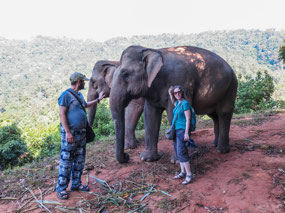
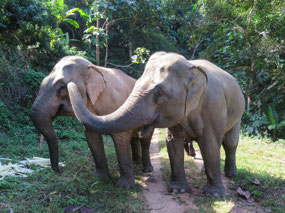
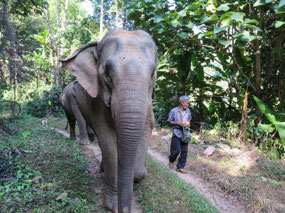
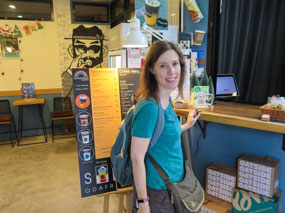
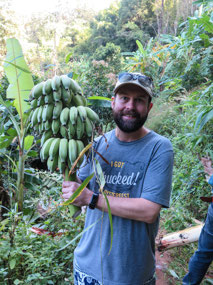
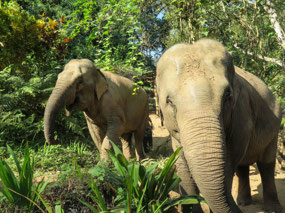
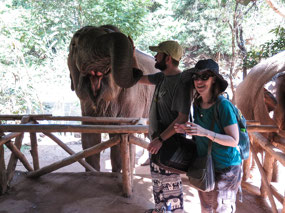
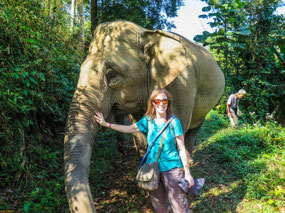
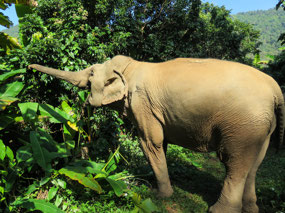
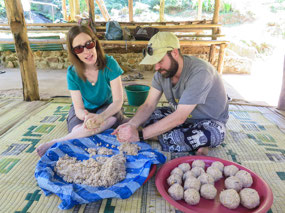
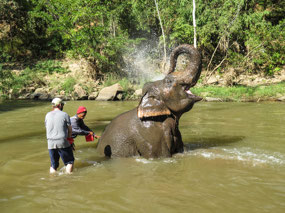
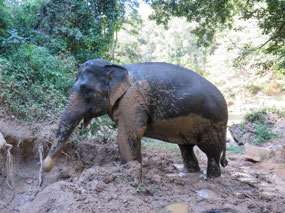
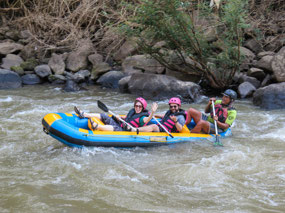
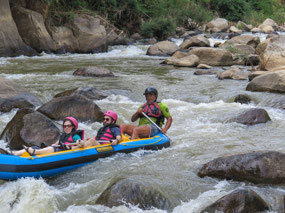
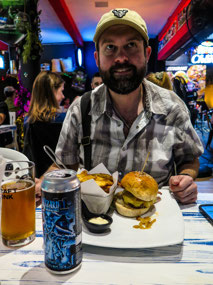





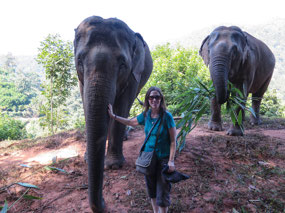
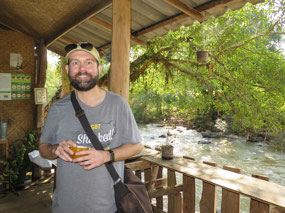
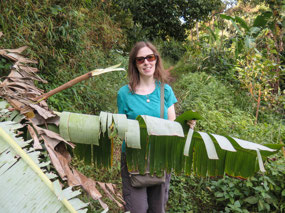
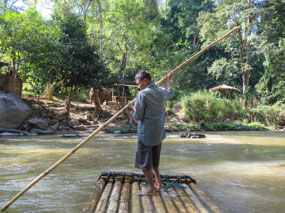
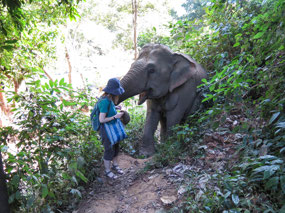

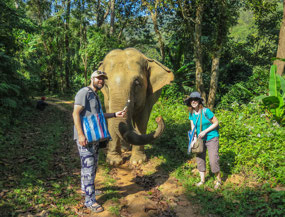
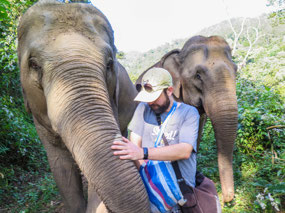
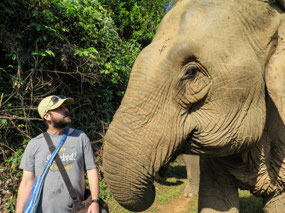
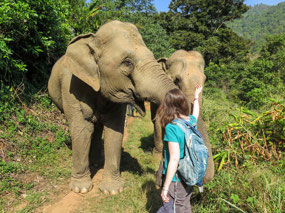
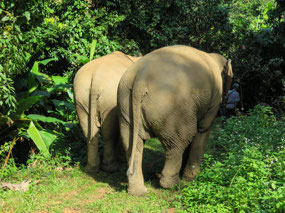
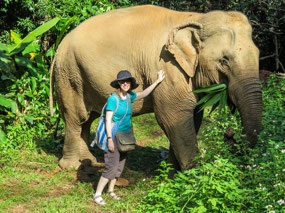
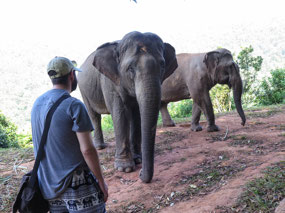
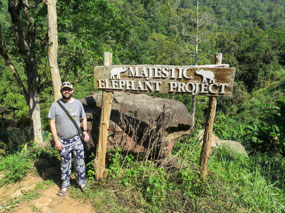
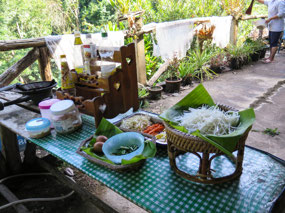
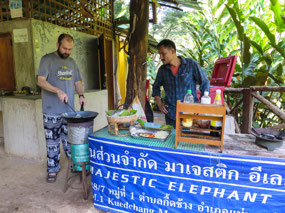
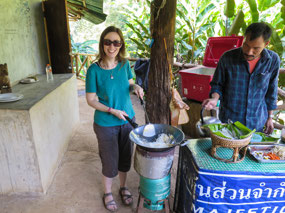
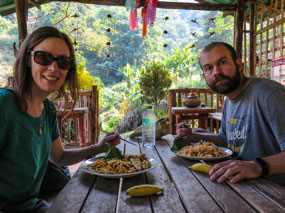
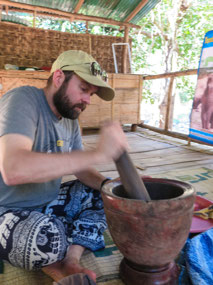

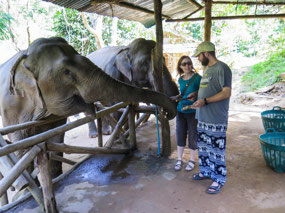
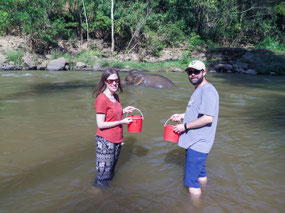
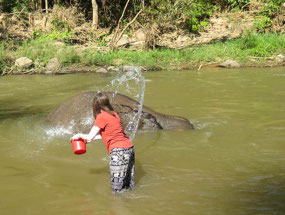
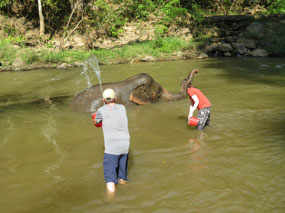
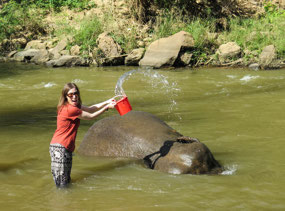
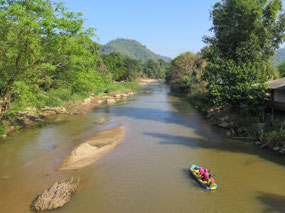

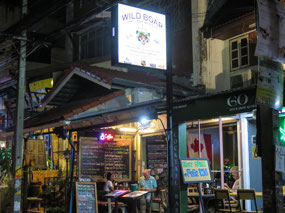
MOM
2022-12-20
WOW…..WHAT AN INCREDIBLE DAY OF ADVENTURE…. YOU certainly don’t do the OLD FOGIE tours……. Glad you are feeling better. HUGGS
Joanne
2022-12-20
Great adventure! I remember bathing an elephant in India, but sadly it was chained. Glad to hear that awareness has changed.
Chris
2023-03-03
This would have been the pinnacle of the trip for me. Meeting some elephants is a dream for me.